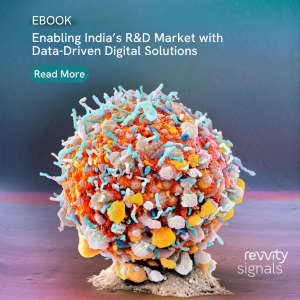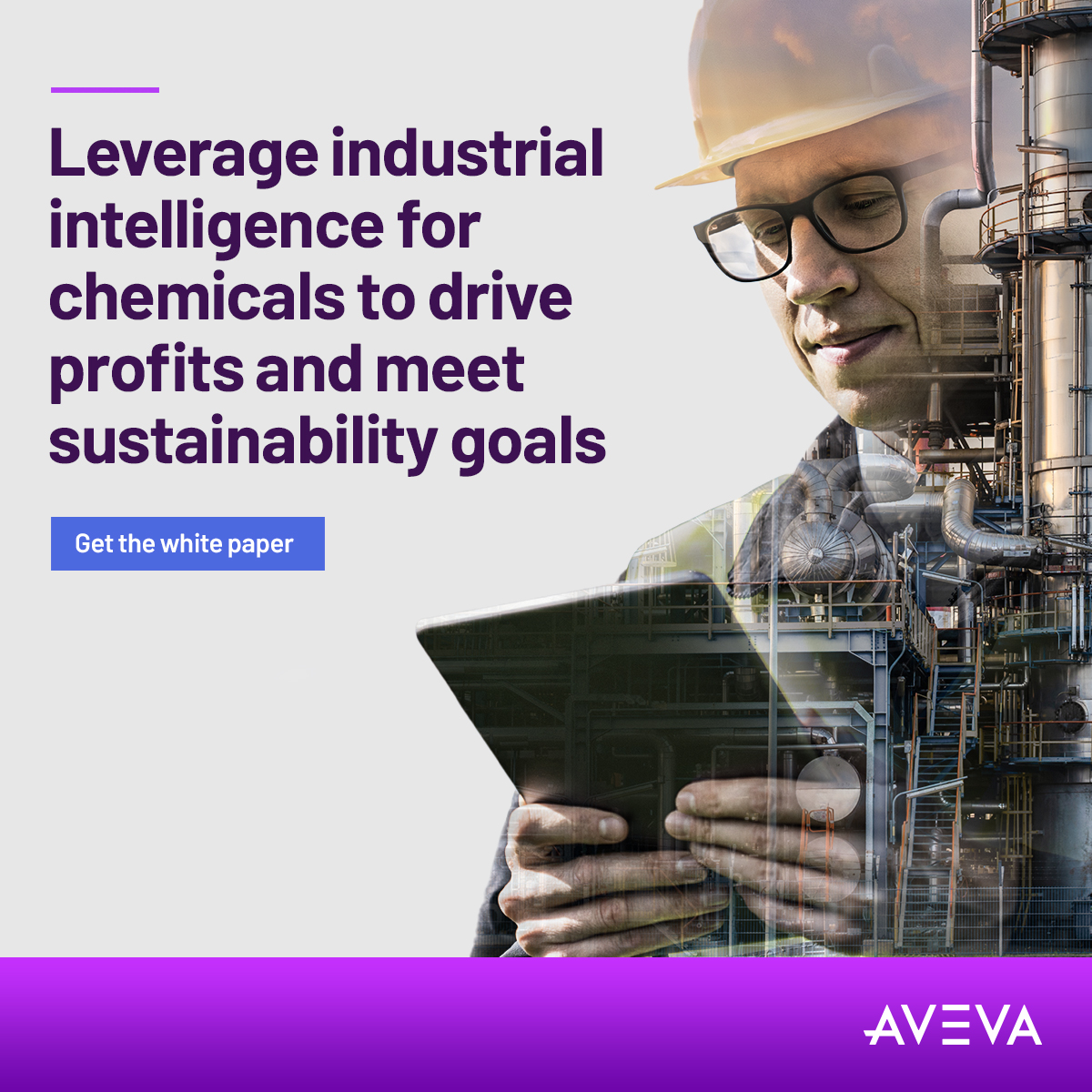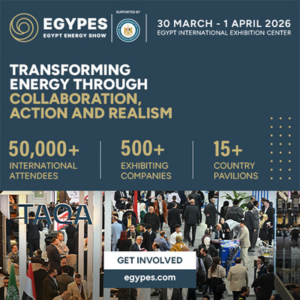Gallery
July 04, 2022
India must think of becoming a global supplier of value added chemicals, says Maulik Mehta, CEO & ED, Deepak Nitrite
Interview with Maulik D. Mehta, CEO & Executive Director, Deepak Nitrite Ltd
July 02, 2022
We have been in ‘Investment Mode’ in the last five years: Shekhar Khanolkar, Executive Director & CEO, Chemicals, DCM Shriram Ltd
DCM Shriram is executing 150 TPD plant each for both Epichlorohydrin and Hydrogen Peroxide. Along with these, the company is also commissioning a 90 TPD AlCl3 plant. Part of it will come by May 2022 while balance by Mid FY23.
How has DCM Shriram performed in FY 2021-22 with special emphasis on chemicals and ethanol segment?
DCM Shriram Limited has had a satisfactory performance in FY 22. Post COVID, the push in the demand side has improved the financial performance and therefore the overall results. Chloro-Vinyl business witnessed almost unidirectional increase in input costs especially energy prices. This was led by global factors such as increase in energy demand, supply constraints due to geopolitical factors, and adverse weather conditions. Freight costs are also adding to the cost push. While realisations have been good, long term focus remains on cost optimisation.
What is the Capex plan for DCM Shriram in FY 2022-23? Projects where you are investing? How will these Capex investments help the company both in terms of revenue and profitability?
The company has taken up aggressive growth plans in both its chemicals and sugar business over the last few years. In FY 22, an investment of Rs. 2,400 crore has been approved by the board for its various expansions in chemicals business while Rs. 540 crore has been approved for expansion in sugar business.
In the chemicals business, we are on the verge of completing our 120 MW power to support the current and future expansion at Bharuch.
We are also executing 150 TPD plant each for both Epichlorohydrin and Hydrogen Peroxide. Along with these, we are also commissioning a 90 TPD AlCl3 plant. Part of it will come by May 2022 while balance by Mid FY23.
Overall DCM Shriram has been in “Investment Mode” in the last five years and going forward, we will continue to evaluate the opportunities based on long term value creation to the group and all stakeholders.
What's the automation and digitalization plan of DCM Shriram across chemical operational plants in FY 2022-23?
We are working on formulating a detailed strategy for digitization, not only chemicals but across the group. In the chemicals business, we are working on a detailed plan to execute a function wise digitization strategy driven by global benchmarking as we work on SAP S4 HANA. Our core strategy in digitization will be long term value creation.
The company is planning a multi-purpose product R&D centre. What's the key R&D initiatives that the company is planning to undertake in this centre?
We are looking at various formulations to support our current portfolio. The centre will be used to develop various grades of current product portfolio as per customer specifications and will also work as an incubation centre to develop new products/formulations within new and allied areas.
How is DCM Shriram balancing growth and sustainability? When is DCM Shriram planning to be net zero?
At DCM Shriram Limited, we have been actively working to conserve water through our various sustainability initiatives and continue to sustain being a water positive company by undertaking various initiatives. We have built multiple water-harvesting structures in different locations, promoted water conservation, and embedded water conservation with an agri-skilling projects. This has recharged groundwater reserves, boosted the irrigated/cultivable areas, and crop production while ensuring year round availability of water.
The company has been continuously striving towards reducing GHG emissions, remaining water positive, maximising waste recycling and utilisation, maintaining safety and health at workplaces and enriching communities.
We firmly believe that carbon capturing technologies and a circular economy will be the business sustainability drivers for growth. The company is steadily increasing use of non-fossil fuels and renewable power along with measures towards waste recycling and enhancing water security. Biomass cogeneration capacity, hydrogen production, and usage of ethanol blending has been increasing year on year.
CSR projects planned for FY 2022-23 with respect to rural development, environmental sustainability, vocational skills, and preventive healthcare?
At DCM Shriram Limited, we are committed to creating a social impact in the lives of communities around our manufacturing locations. We work with an integrated rural development approach working towards both infrastructure and softer aspects like behavioural change/IEC etc. We have long term ongoing programs across the thematic areas of sanitation, preventive healthcare, environment sustainability, education and livelihood. In FY 2022-23, also our focus will be on these CSR pillars with regular need assessments and baseline studies to help plan our CSR strategy accordingly.
Note: This interview has also been published on Chemical Industry Outlook 2022 and here's the link to view full version of the annual compendium.
Click here to attend largest industry gathering at NextGen Chemicals & Petrochemicals Summit 2022
July 02, 2022
Interview with Kalpesh Dhami, Managing Director, Engineering & Chemical (India) Pvt. Ltd. and Dinesh Chopra, Managing Partner, D R Enterprises
Interview with Kalpesh Dhami, Managing Director, Engineering & Chemical (India) Pvt. Ltd. and Dinesh Chopra, Managing Partner, D R Enterprises
July 02, 2022
We are focusing on sustainable innovation to drive next level of growth: Team Anuvi Chemicals
Interview with Dr. Kanak Lata Saxena, Managing Director & Vivek Saxena, Director, Anuvi Chemicals Ltd.
July 01, 2022
Interview with Kalpesh Dhami & Dinesh Chopra, D R Enterprises
Interview with Kalpesh Dhami, Managing Director, Engineering & Chemical (India) Pvt. Ltd. Dinesh Chopra, Managing Partner, D R Enterprises
July 01, 2022
We are leveraging digital led platforms to automate our sourcing and supply chain operations, says S. Kartik, VP-Procurement, Tagros Chemicals
Interview with S. Kartik, VP-Procurement, Tagros Chemicals India Pvt Ltd
July 01, 2022
We are investing on R&D to launch innovative and customised solutions for resins segment, says Harshad Naik, MD & CEO, Crest Speciality Resins
Interview with Harshad Naik, MD & CEO, Crest Speciality Resins Pvt. Ltd.
June 30, 2022
We are focused on developing sustainable green products for coatings industry, says Samir Vora, Regional Business Director, Borchers India
Interview with Samir Vora, Regional Business Director (Coating Additives), Borchers India Chemicals Pvt. Ltd.
June 30, 2022
We are planning to increase production capacity of unsaturated ploymer resins to 75,000 MTPA: Orson Resins & Coatings
We are planning to increase production capacity of unsaturated ploymer resins to 75,000 MTPA: Orson Resins & Coatings
June 29, 2022
Our combined Capex for FY 2022-23 would exceed Rs. 6,000 Crore: Bhaskar Jyoti Phukan, Managing Director, Numaligarh Refinery Ltd
We have a very aggressive Capex plan as we are implementing major projects, namely the Paradip Numaligarh Pipeline, capacity augmentation from 3 to 9 million tonnes, building the Indo Bangla Product Pipeline and investing in biorefinery
What are the current trends in the petrochemicals sector and how will it impact India?
We have witnessed a global disruption in supply chain logistics and because of that petrochemical commodity prices are running very high. Irrespective of petrochemical products that industries are using, be it polypropylene or polyethylene, the prices are running very high for the producers on a temporary basis. It may sound very good but in the long term this is not sustainable.
We have witnessed how crude prices are moving and petrochemicals cannot be totally divorced from that reality. Probably, it will get resolved when the product production comes back to the normal stream and logistic issues are resolved. Production mainly comes out of China, and perhaps because they are on lockdown, like other commodities petro[1]chemical products have a supply deficit both driven by the production outages and also logistic constraints. However, the high pric[1]es are temporary and the gains by producers would not be sustainable.
Key milestones achieved by Numaligarh Refinery in FY 2021-22 and what is the forecast for FY 2022-23?
We have not closed our accounts until now and therefore the numbers are not final but the only thing that I can tell you at this stage is that our revenues will be very good. It will be upwards of Rs. 20,000 crore. So, the top line is okay and profitability figures will also be impressive and is likely to surpass what we have achieved last year.
We have been extremely efficient with energy use so we will clock all time better and we could clock the highest production of wax. One major achievement for us as a PSU company is that we have been declared as the highest procuring entity on the GeM platform as we have been aggressively using the government's e-market place.
Capex plans for FY 2022-23 and new products where you are focusing? How will it impact Numaligarh Re[1]finery and what are the plans related to automation and digitalization across plants?
We have a very aggressive Capex plan as we are implementing major projects, namely the Paradip Numaligarh Pipeline, capacity augmentation from 3 to 9 million tonnes. That means we are building a 6 million tonne refinery inside our premises. Also, we are building the Indo Bangla Product Pipeline and are also investing in the biorefinery that is coming up just adjacent to our refinery at Numaligarh. Our combined Capex for FY 2022-23 would exceed Rs. 6,000 crore. So it is a process and in FY 2021-22, we have spent in excess of Rs. 3,000 crore. So that means we have to spend around Rs. 32,000 crore in the next four years. That's what we are aspiring for so that we can complete all the projects on hand. As far as product diversification is concerned, our immediate goal is to implement the polypropylene plan which has been approved by the board. Till the time, the refinery would diver[1]sify into wax production which we would like to keep at the highest. We also have some variants of kerosene, MTO, and wash oil. So these are small variants that we will continue to produce. We will also market some amount of nitrogen that we produce in our plant. Our diversification mainly will happen once we implement the petrochemical projects.
What are your plans with respect to automation and digitization?
We have embarked upon a very ambitious automation and digitization process. We have initiated a project through a cloud shared model called IEEDMS (Integrated Electronic Engineering Data Management System). We have different vendors and consultants on the same platform. Once the files are created, then finally we do a 3D model, and subsequently the structural design can be shared across all stakeholders. We have hired some space on AWS cloud so that all stakeholders can access the files.
This speeds up the approval process and eliminates the requirement to move paper from one place to another. This is a major initiative and it did require an onboarding of all the stakeholders who are using these papers. It was a herculean task but we are through with it. Both consultants and vendors are happy as they will benefit in terms of the approval process as well as the accuracy of the documents that we maintain and at the end of the day all our project documents will be digitized. So this is one major initiative that we are undertaking.
Second, we have implemented something called E-logbook as every process plan is required to maintain log books at different places, namely the field locations. The control room where people who are operating the plant through the DCS are also required to maintain a log book. We have digitized all these log books in a manner that when an operator goes to an equipment, particularly instrumentation gauge or pressure transmitter, he can acquire the data by scanning the QR code through a mobile device and these are intrinsically safe.
One of the major inputs, coming out from the historian software is fed by the DCS software as different plants operate differently.
CSS and DCS dumps the data into some history and the E-logbook package picks up the data and then our console officers put their comments and inputs. This data visibility is also available across the organization so that people who matter can review.
Third, we are implementing it in the reliability space and that is AIMS (Assets Integrity Management System) and RCM (Reliability Centered Maintenance). These are very standard solutions to increase the reliability and the operation availability of the plant.
Numaligarh Refinery has also tied up with AspenTech for maximizing refinery capacity and achieving operational efficiency across different units?
We actually operate different suites provided by AspenTech. We are using a solution called ATOMS that helps us in reconciliation of the stocks i.e. what is going out from the units and what is getting stored in the tanks.
We get those recorded without having to rely on the manual documentation. So we get those things quickly and we can take corrective action if required. Then we use a simulation software called ISIS. We are using the entire suite and we have benefited from their usage and we will continue with that even in future.
You have got a go ahead for the polypropylene project worth Rs. 6,555 crore? What is your plan of action?
We have got the licensor on board and in this case it is LUMMUS. So, we are getting technology from LUMMUS for converting propylene to polypropylene. Maybe going forward, we have to engage one engineering consultant which we will do in due course of time and then parallelly we have to apply for environmental clearance. The process is on and we will obviously start when we get the okay from concerned authorities. As of now, we have only engaged the licensor and they will do the front end engineering, whatever basic engineering is required so that the activity will start when required.
With this diversification, what all products would you be planning as of now?
As of now, we will only remain in the polypropylene space, different grades of course. And interchangeability of different grades based on the market acceptability. We will have different grades but again we will confine ourselves within the commodity space of the petrochemical chain. So once we move forward, we will see what else we can do.
When do you plan to commercialize?
Assuming that the Ministry of Environment, Forest and Climate Change is happy with one season data which they should be because our baseline data is quite recent. If that be the case, we can expect the clearance to come sometime in the middle of next year or beginning of the first quarter of next year. So when the zero debt starts, I think we should be able to finish up it in 36 months.
What is your market share nationally and by when are you planning to triple your capacities?
We are a very tiny refinery and our national refining capacity is 249 as we process around 2.6 MMTPA which is just 1% of national refining capacity. While we are tiny in the context of India but not in the North East we are definitely a big player. So, one need not only see the size of the refinery but how efficient they are. We are quite efficient that way. So once we have the capacity, we intend to be both efficient and reasonably big to have a lot of product diversification. That is the way forward for us.
As a part of Hydrocarbon vision 2030 for North East India, what is the role that you foresee for Numaligarh Refinery?
If you go through the Hydrocarbon Vision Document 2030, a large number of projects hinge on our expansion, be it IGL which is on their execution way. Be it the product pipeline going from Numaligarh to Siliguri, a 1.72 million pipeline getting augmented over there. Our Bangladesh export will majorly depend upon our ability to supply to them, which again is dependent on our expansion. We have an aggressive plan to go towards Manipur also in future, maybe that pipeline will also come and depending upon our success. So major link projects are coming up based on what Numaligarh will look like in 2025.
You have also signed an agreement with Indradhanush Gas Grid in 2021. How will this agreement help you in the long run?
This agreement will secure natural gas for us as they are a major transporter. GAIL will terminate their pipeline at Guwahati and beyond Guwahati is the responsibility of IGL to carry natural gas to all eight state capitals of North East. They have a very robust natural gas grid and we play a devoted role being an anchor customer, so we will consume around 2.5 mmscfd of gas. So that is a very large quantity if you consider the entire initial consumption of North East. I am sure once the gas grid is connected, a lot of industries will come and the story of the FPJ pipeline will gradually get replicated even in the North East.
So the North East will have access to energy and a lot of ancillary and small industries will grow hinging on the energy availability.
You are also setting up a biorefinery. Could you elaborate on it?
Currently, our biorefinery is getting constructed and we are almost 70% through. This is based on bamboo as feedstock as opposed to other biorefineries based on sugarcane or broken rice that is called 1G. We are also in 2G space but we are unique in the sense that our feedstock is bamboo as opposed to rice straw in other places.
As you are aware that bamboo has a lot of cellulose, we will isolate the cellulose further hydrolyzed in presence of this enzyme, called enzymic hydrolysis, to convert it to glucose, and finally glucose to eternal by fermentation. And in the process, we will also produce something called furfural and acetic acid. Furfural is a good platform chemical and it will be a way of producing either furfuryl alcohol which is a very good binding substance or its product to produce a wood binding agent for refractory material. Since India imports it, that will directly go for import substitution.
We are also trying to open up production of some biodegradable plastic by using furfural as the base material. We have collaborated with IIT Guwahati where the fundamental process is getting developed and we are trying to put up a pilot plant maybe by the end of next year.
We plan to produce 6 crore litres of ethanol per annum and should be in stream by December this year.
How is your company striking a balance between sustainability and growth? Sustainability projects planned for FY 2022-23?
There is no escape from sustainability these days, and carbon dioxide emission is one of the key areas that we are looking at very closely. Apart from water consumption, freshwater consumption is another thing that we are looking at very seriously. Year on year, we have been able to reduce freshwater consumption. We have a permission to consume fresh water of 1,200 cubic meter per hour but we are managing only 700 by aggressive recycling of water.
We want to take it to another level by tying up with NEIST Jorhat, a leading research laboratory. The goal is to separate phenol from the waste water so that that waste water can be recycled into our hydrocracker plant because hydrocracker needs a lot of that injection water during the separation process. We are also trying to pursue green hydrogen and have already floated a tender for supplying an electrolyzer capacity of 2.4 KTP roughly about 300 Kg per hour.
We have invested in a grid connectivity with 220 KV substation coming up and we intend to source green power to power our electrolyzer. So, from an electrolyzer we will produce green hydrogen to the extent that it will reduce our own steam based hydrogen production process, eventually reducing our carbon dioxide emissions.
What are the CSR initiatives you would be undertaking this year?
There are nine areas of our CSR initiatives but the major focus is on health and education. We will continue to invest in health besides our continuous efforts in education. We are already running a nursing school with 100% absorption and are taking around 40 students per year. But going forward, we are trying to upgrade that nursing school with additional 50 seats and to a three-year course.
That is our commitment to the society and the health sector. We have heavily invested in skill development as well and we will continue our efforts on these fronts.
Where do you see Numaligarh re[1]finery in the next five years?
We want to remain nimble as we do not know what lies in the future. There can be two scenarios, one a very aggressive demand destruction scenario where you have to hasten the migration from auto fuel to chemical. So, we will like to keep our options open and at the same time, we also want to be a very major player in the policy initiatives like exports to Bangladesh and Myanmar. We are at an advantage because we are contiguous to both the countries and we are also connected very well by the riverways. Since riverways are being revived, we definitely will play a key role in Bangladesh. Export both in terms of petrochemical as well as petroleum products because we have four sites.
We have a vision that Bangladesh's transition from the energy sector will be a little slower than India's because they are not blessed with two much sunlight and solar cannot be an option for it.
For a longer time, they will have to depend on hydrocarbons because wind energy is also not very great, though they have a shallow sea. Windmills are pretty costly and Bangladesh is not there today. Therefore, our bet is that while there may be a demand destruction very rapid in India in the advent of EV coming very aggressively. Even if that destruction is very drastic, we have a market in Bangladesh and Myanmar to sustain us for some time. But even if that does not happen, we should be nimble enough to migrate to certain chemicals.
We have identified the portfolio and will take action in due course of time.
















